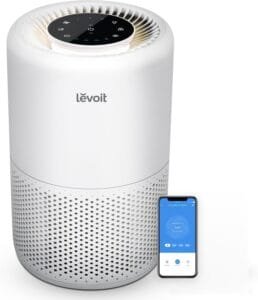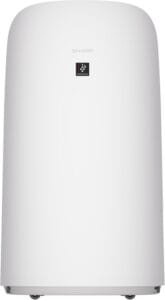Introduction to Smart Home Technology
Smart home technology has become an integral aspect of contemporary living, as it transforms traditional households into interconnected environments that enhance convenience and efficiency. At the core of this evolution is the proliferation of Wi-Fi-enabled devices, which allow homeowners to manage various aspects of their living spaces remotely via smartphones or other devices. This interconnectedness not only streamlines daily tasks but also facilitates a richer, more responsive home environment.
The integration of smart technology into household appliances has gained tremendous momentum, with advancements in connectivity and functionality. Devices such as smart thermostats, security systems, and lighting fixtures coalesce to form a cohesive network, where information is exchanged seamlessly. This interconnectivity empowers users to monitor their homes in real-time, control energy consumption, and enhance overall safety. As a result, homeowners experience improved energy efficiency, reduced operational costs, and elevated convenience levels.
Moreover, the rise of smart home technology has significant implications for health and comfort. Wi-Fi-enabled air purifiers and humidifiers, for example, can significantly improve indoor air quality by regulating humidity levels and filtering pollutants. These devices can interact with one another, allowing users to create an optimized living environment tailored to their specific needs. This synergy between different smart devices not only promotes physical well-being but also contributes to enhanced mental peace by providing a more consistent and controlled home climate.
As society continues to embrace smart home technology, the focus on health-conscious and environmentally responsible decisions will likely drive further innovation. The integration of smart devices can lead to a profound impact on everyday life, ensuring that modern living is not just about comfort and convenience, but also about fostering healthier living spaces.
Understanding Air Purifiers: How They Work
Air purifiers play a vital role in maintaining indoor air quality by filtering out pollutants, allergens, and toxins. The essential mechanics of these devices involve drawing in air from the environment, passing it through various filtration systems, and releasing cleaner air back into the room. The efficacy of an air purifier largely depends on the type of filtration technology it employs.
One of the most well-known filtering methods is the High-Efficiency Particulate Air (HEPA) filter. HEPA filters are designed to capture particles as small as 0.3 microns with an efficiency rate of 99.97%. This means that they can effectively eliminate dust, pollen, pet dander, and other airborne contaminants. As a result, HEPA filters are highly regarded for their ability to improve air quality in homes, particularly for individuals who suffer from allergies or respiratory conditions.
In addition to HEPA filters, some air purifiers incorporate activated carbon filters. These filters excel at removing odors, smoke, and volatile organic compounds (VOCs), which are often emitted by household products and furnishings. By utilizing both HEPA and activated carbon filters in tandem, air purifiers can provide comprehensive air purification, addressing a wider array of pollutants.
Furthermore, some advanced models have started embracing UV-C light technology that targets microorganisms such as bacteria and viruses. This approach enhances the effectiveness of traditional filtration systems, promoting a healthier living environment. The integration of smart technology into air purifiers allows users to monitor air quality in real time, helping them manage indoor air pollutants more effectively.
Ultimately, understanding the mechanics of air purifiers, including the specific filtration technologies involved, can empower consumers to make informed choices. Ensuring clean indoor air is essential for overall health and well-being, making the role of air purifiers increasingly significant in modern homes.
Understanding Humidifiers: Function and Benefits
Humidifiers are devices designed to maintain optimal humidity levels in indoor environments. They work by releasing water vapor or mist into the air, which can significantly enhance the comfort of living spaces, particularly in regions experiencing low humidity levels. When indoor air is excessively dry, it can lead to various discomforts, such as dry skin, irritated sinuses, and respiratory issues, making the role of humidifiers crucial for enhancing air quality.
The primary function of a humidifier is to add moisture to the air, which can help alleviate problems associated with dry air. During winter months or in arid climates, the humidity levels often drop to uncomfortable levels, leading to issues such as static electricity, dry throat, and increased susceptibility to illness. By maintaining a balanced humidity level, typically between 30% and 50%, humidifiers can help create a more inviting and comfortable living environment.
There are several types of humidifiers available on the market, each with distinct mechanisms and capabilities. The most common types include evaporative, ultrasonic, steam vaporizers, and impeller humidifiers. Evaporative humidifiers use a fan to blow air through a wet wick or filter, which naturally evaporates water into the air. Ultrasonic humidifiers utilize ultrasonic vibrations to produce a fine mist, whereas steam vaporizers boil water and release steam, making them ideal for killing germs and bacteria. Impeller humidifiers, on the other hand, use a rotating disk to fling water into a diffuser, breaking it down into tiny droplets.
In addition to enhancing comfort, humidifiers offer numerous health benefits, such as preventing dry skin and helping alleviate coughs and congestion. They can also protect furniture and wooden floors from cracking due to dry air. Considering their functions and benefits, humidifiers represent a valuable addition to any household aiming to achieve better air quality and overall wellness.
Synergy of Air Purifiers and Humidifiers: Why Both Are Essential
The integration of smart Wi-Fi air purifiers and humidifiers in indoor spaces has gained significant attention due to the complementary benefits they offer in promoting a healthier environment. Air purifiers are designed to remove airborne pollutants such as dust, pollen, smoke, and other allergens, while humidifiers help to maintain optimal humidity levels in the indoor air. Utilizing both devices in tandem can create a harmoniously balanced atmosphere that supports respiratory health and overall well-being.
One significant advantage of combining air purifiers and humidifiers is their ability to combat dry air. In many regions, especially during the winter months, indoor air can become excessively dry due to heating systems. Dry air can lead to various issues, including dry skin, irritated sinuses, and respiratory discomfort. Employing a humidifier in conjunction with an air purifier works to alleviate these symptoms, enhancing comfort levels without compromising air quality.
Moreover, smart Wi-Fi air purifiers equipped with advanced filtration systems effectively capture particulate matter and common allergens. An effective air purifier ensures that particles filtered from the air do not accumulate on surfaces, contributing to a cleaner living environment. When moisture is introduced via a humidifier, it can prevent particulate matter from becoming airborne again, thereby enhancing the overall effectiveness of the air purification process.
Furthermore, maintaining an adequate humidity level is not just a comfort issue; it also plays a critical role in improving air quality. Humidity helps in keeping mucous membranes hydrated, thereby reducing the likelihood of respiratory infections and promoting better lung function. In summary, utilizing both smart Wi-Fi air purifiers and humidifiers can significantly contribute to creating a healthy indoor environment, offering complementary benefits that enhance air quality and ensure optimal humidity. This synergy positions these devices as essential components of modern indoor air management strategies.
Smart Features: What to Look For in Wi-Fi Air Purifiers and Humidifiers
As consumers increasingly seek convenience and efficiency in their home appliances, the demand for Wi-Fi-enabled air purifiers and humidifiers has grown significantly. When selecting a smart appliance, it is essential to focus on several key features that can enhance functionality and improve overall user experience.
One of the most beneficial features to consider is mobile app control. This functionality allows users to manage their devices remotely through a smartphone or tablet. With mobile applications, individuals can monitor air quality levels in real-time, adjust settings, and receive notifications regarding filter changes or maintenance requirements. This level of control is particularly advantageous for those with busy lifestyles or specific health concerns, as it enables prompt adjustments based on immediate needs.
Air quality monitoring is another crucial smart feature that ensures users stay informed about their indoor environment. Many Wi-Fi air purifiers and humidifiers come equipped with sensors that evaluate various pollutants, including particulate matter, volatile organic compounds (VOCs), and humidity levels. This data can provide valuable insights and help users maintain optimal air quality. Look for devices that offer real-time monitoring and provide detailed reports through their companion apps.
Voice assistant compatibility has also emerged as a popular characteristic among smart home products. Integration with platforms such as Amazon Alexa, Google Assistant, or Apple HomeKit allows for hands-free operation, making it easy to adjust settings using simple voice commands. This feature is particularly appealing for smart home enthusiasts looking to create a cohesive and efficient living environment.
Ultimately, selecting the right Wi-Fi air purifier or humidifier involves considering individual needs and preferences. Evaluate the smart features available and assess how they align with your lifestyle. Prioritizing functionalities such as mobile app controls, air quality monitoring, and voice assistant compatibility will ensure that your investment in a smart appliance meets your specific requirements and enhances your home’s air quality effectively.
Health Benefits of Using Smart Wi-Fi Air Purifiers and Humidifiers
Maintaining optimal indoor air quality is crucial for overall health and well-being. Smart Wi-Fi air purifiers and humidifiers play a significant role in achieving this, particularly for individuals who suffer from allergies, asthma, and various respiratory conditions. The integration of smart technology allows users to monitor and control these devices remotely, ensuring that they are functioning efficiently to improve air quality.
Research indicates that poor air quality can exacerbate health issues such as asthma and allergies, leading to increased symptoms and discomfort. The particulate matter and allergens often found in indoor environments can trigger inflammatory responses, causing breathing difficulties. Smart air purifiers are designed to filter out these harmful particles, including dust, pet dander, mold, and pollen, thus creating a healthier living space. By utilizing advanced filtration technologies, these devices can significantly reduce airborne pollutants, contributing to better respiratory health.
Furthermore, humidifiers are vital in maintaining appropriate humidity levels, which is essential for respiratory function and skin health. Low humidity can dry out the nasal passages, throat, and skin, making individuals more susceptible to infections and discomfort. A smart humidifier automatically adjusts the moisture level based on environmental conditions, ensuring that the air remains optimally humidified. This not only eases respiratory symptoms but also promotes better sleep quality and comfort.
The mental health benefits of improved air quality should not be overlooked. Studies have shown that clean air correlates with enhanced cognitive function and better mood stability. By reducing irritants and promoting a soothing environment, smart Wi-Fi air purifiers and humidifiers create a sanctuary that can alleviate stress and anxiety, contributing to overall well-being.
Comparative Review of Top Smart Wi-Fi Air Purifiers and Humidifiers
As consumers become more health-conscious, the demand for smart Wi-Fi air purifiers and humidifiers has seen a significant rise. In the crowded market, several leading models stand out due to their unique features, performance, and customer satisfaction. This comparative review will focus on three top models: the Dyson Purifier Cool, the Levoit Core 300, and the Honeywell HPA300.
The Dyson Purifier Cool is a standout product that integrates advanced filtration with smart technology. Priced at approximately $549, it not only purifies the air but also cools users during hot months. The model features a HEPA filter that captures allergens and pollutants, while its companion app allows users to monitor air quality in real-time. Customer reviews often praise its sleek design and efficient performance, though some find the price point to be on the higher side.
Another popular option is the Levoit Core 300, which offers a budget-friendly alternative priced around $99. This compact air purifier features a three-stage filtration system, including a HEPA filter and is capable of filtering spaces up to 219 square feet. Users appreciate its quiet operation and effective purification, making it ideal for bedrooms or small offices. However, it lacks Wi-Fi connectivity, which may be a drawback for some consumers seeking smart functionality.
Lastly, the Honeywell HPA300 is well-regarded for its powerful air purification capabilities designed for larger spaces up to 465 square feet. Priced at approximately $249, it features a HEPA filter and an activated carbon pre-filter to effectively reduce odors along with allergens. Customers frequently highlight its strong airflow and ease of use. However, unlike others, it does not offer smart capabilities or Wi-Fi integration, which could influence buyers favoring technological innovations.
In summary, while each model has its strengths and weaknesses, understanding the specific needs and preferences can guide users toward their ideal smart Wi-Fi air purifier and humidifier solution. By weighing features, pricing, and reviews, consumers will be better equipped to make informed decisions that enhance indoor air quality.
User Experiences: Testimonials and Reviews
As the adoption of smart Wi-Fi air purifiers and humidifiers has surged, a diverse range of user experiences has emerged, highlighting both the benefits and potential challenges associated with these devices. Many users commend the ease of integration into their daily lives, particularly through smartphone applications that enable real-time monitoring and control of air quality. For instance, several individuals have reported a significant reduction in allergens and dust particles, leading to improved respiratory health. One user noted, “Since installing our smart air purifier, my family’s allergy symptoms have significantly decreased. It’s been a game changer for our home environment.”
Furthermore, energy efficiency is a common theme in positive reviews. Many users appreciate the ability to set schedules, ensuring devices operate only when needed, thus conserving energy and reducing household costs. A testimonial from another user emphasized, “I love how I can manage my air purifier remotely. It’s wonderful to come home to clean air, and I’ve noticed a drop in our electricity bill since we started using it.” Such feedback underscores the efficiency and convenience that smart devices can offer.
However, not all experiences have been entirely positive. Some users have reported difficulties with connectivity to their Wi-Fi networks or issues with app functionality. One user expressed frustration: “I love the concept, but my air purifier often disconnects from the Wi-Fi, which defeats its purpose of being a smart device.” In addition, the initial investment in high-quality devices can be a concern; some users feel that they are paying a premium without seeing proportional benefits immediately.
Overall, the feedback on smart Wi-Fi air purifiers and humidifiers paints a complex picture, with many users experiencing enhanced air quality and convenience, while others face challenges related to technology and cost. These testimonials provide valuable insights for potential buyers evaluating whether to incorporate these devices into their routines.
Conclusion
As we have explored throughout this comprehensive review, smart Wi-Fi air purifiers and humidifiers offer a multitude of advantages that can significantly enhance the quality of indoor air. These devices not only provide efficient purification and humidity control but also incorporate advanced technology that allows for convenient management through smartphone applications. This integration facilitates real-time monitoring of air quality, which can be particularly beneficial for individuals with allergies, asthma, or other respiratory conditions.
The ability to customize settings based on personal preferences and environmental conditions makes smart air purifiers and humidifiers adaptable for various lifestyle needs. Moreover, their energy-efficient design often results in reduced electricity bills, which is an additional economic incentive for potential users. However, it is essential to assess your specific circumstances and priorities when considering an investment in these technologically advanced appliances.
Factors such as your current air quality, the size of your living space, and personal health considerations must be taken into account. Additionally, prospective buyers should evaluate the initial cost of the units, the required maintenance, and the frequency of filter replacements. Ultimately, smart Wi-Fi air purifiers and humidifiers may prove to be a valuable addition to your home, enhancing not only your comfort but also contributing to your overall well-being.
We appreciate your interest in exploring the benefits of smart indoor air quality solutions. By taking the time to assess your own air quality and health needs, you can make a more informed decision about whether these devices are right for you. Thank you for reading, and we hope this review has been informative and helpful in your quest for a healthier indoor environment.

























